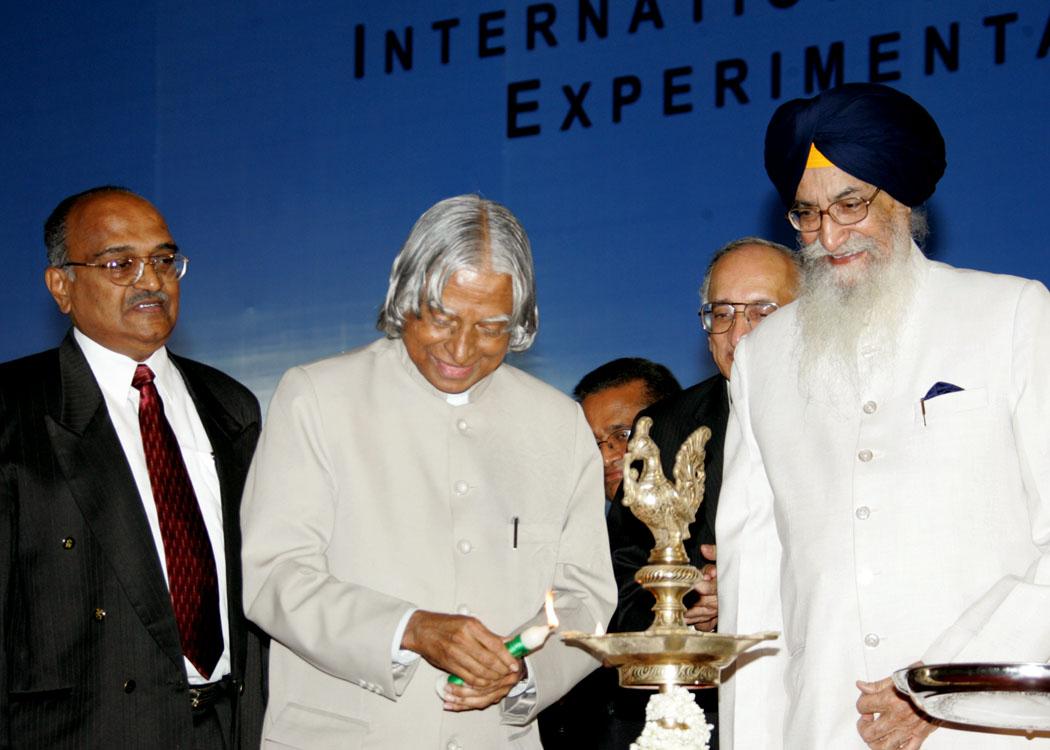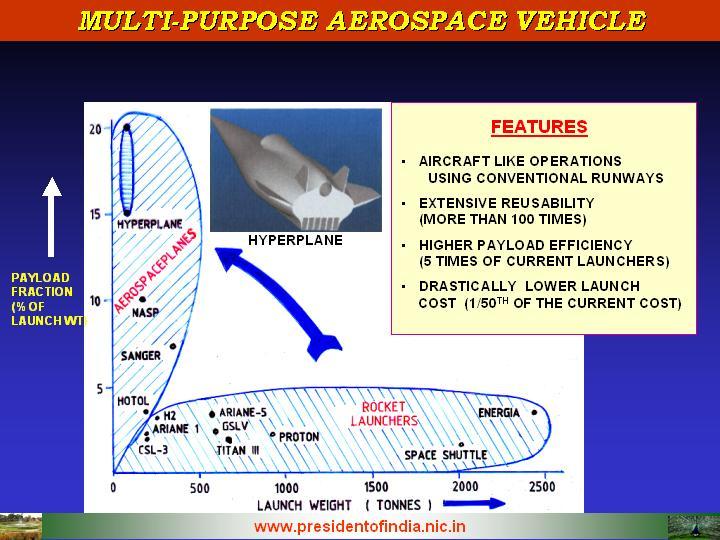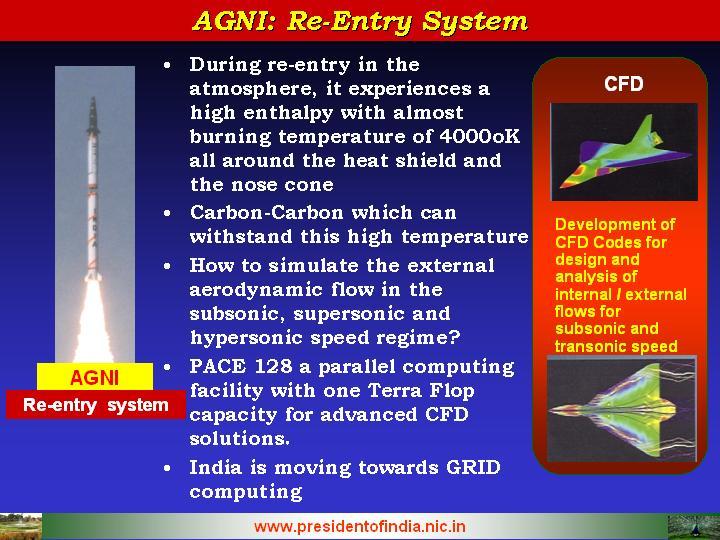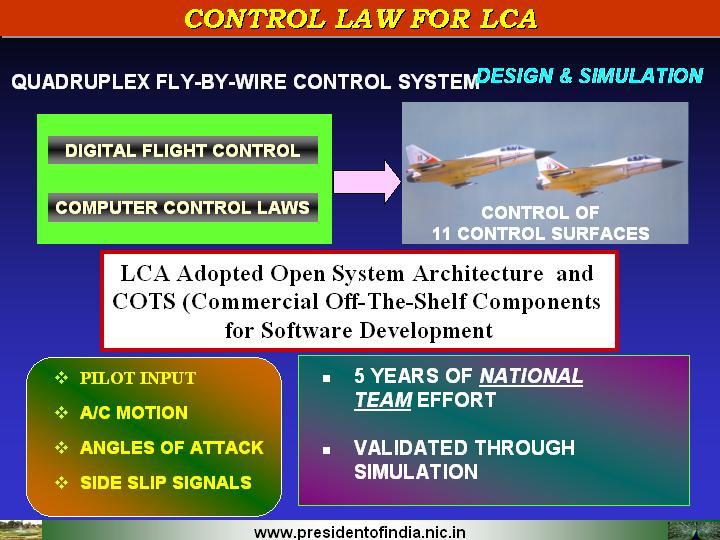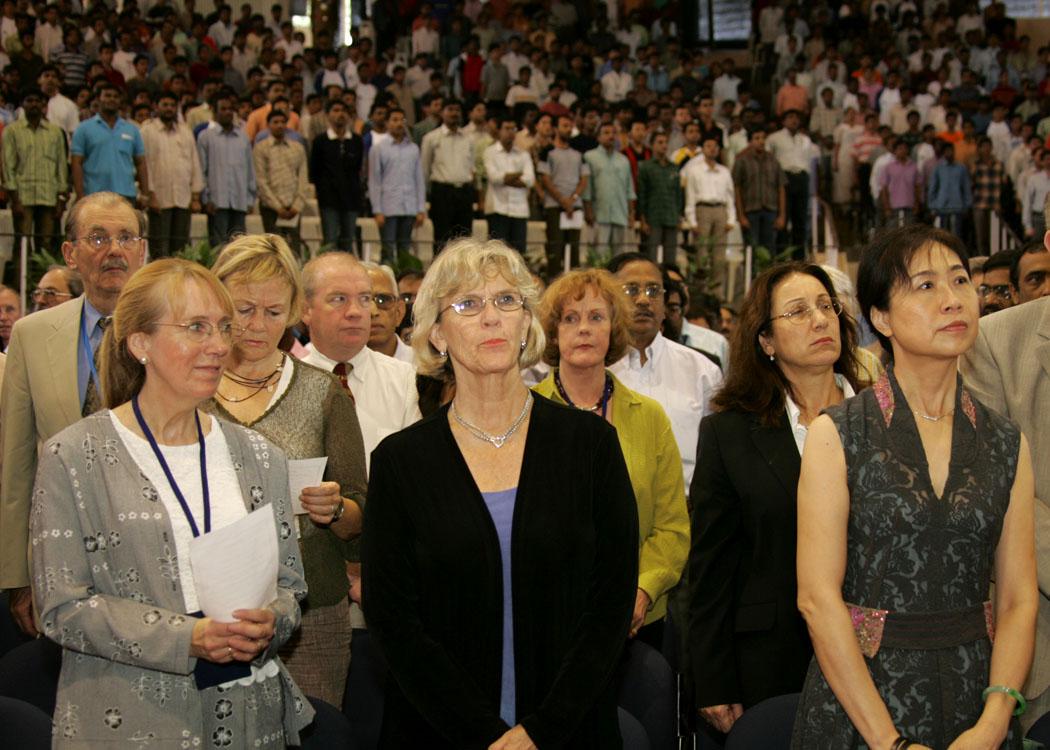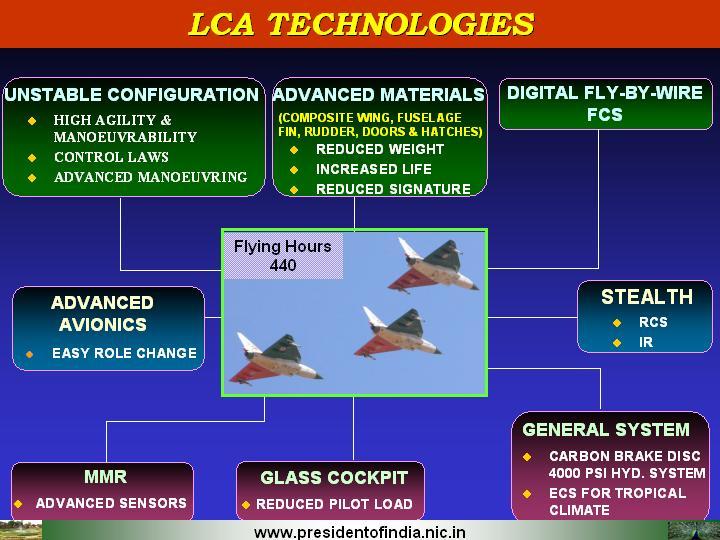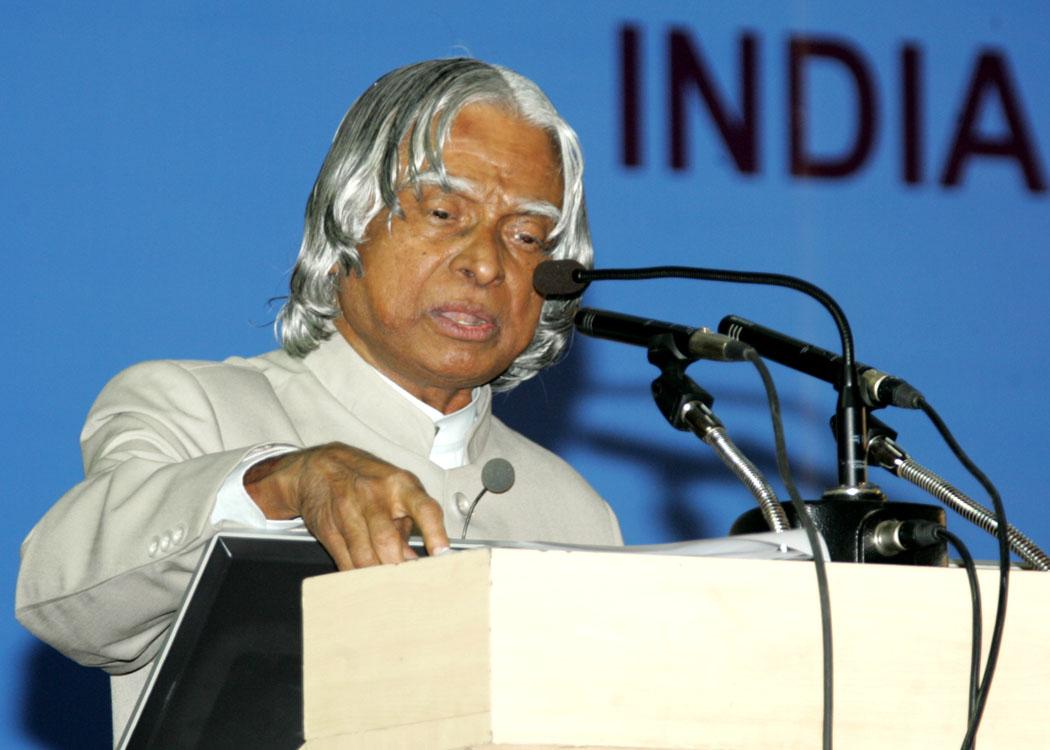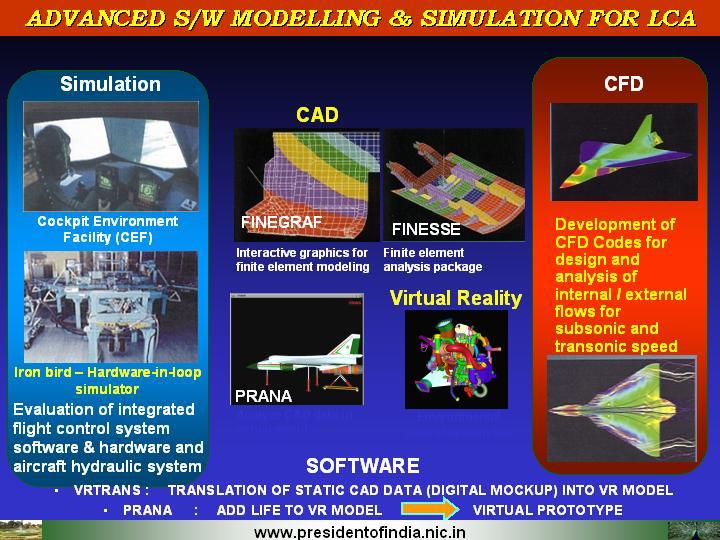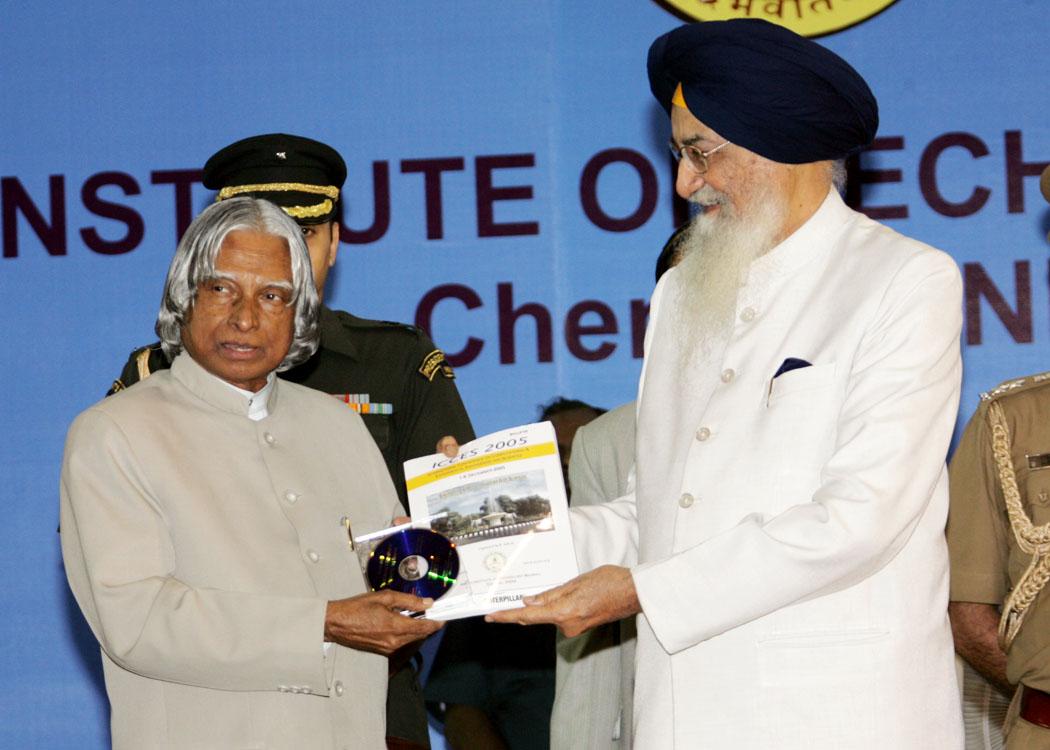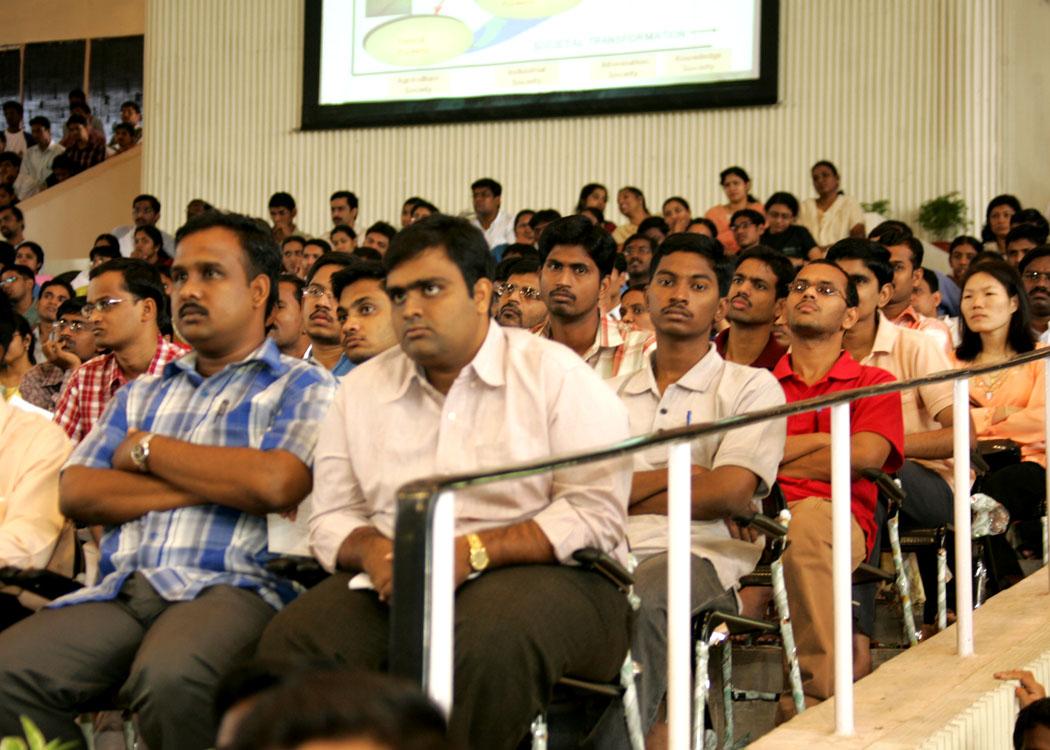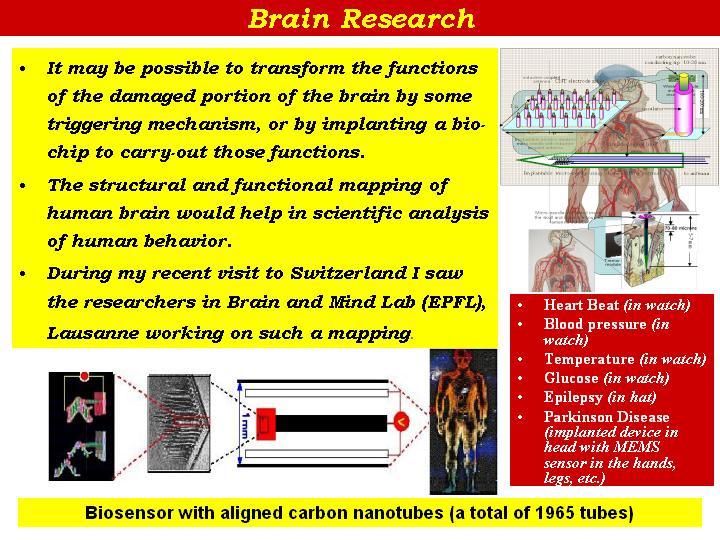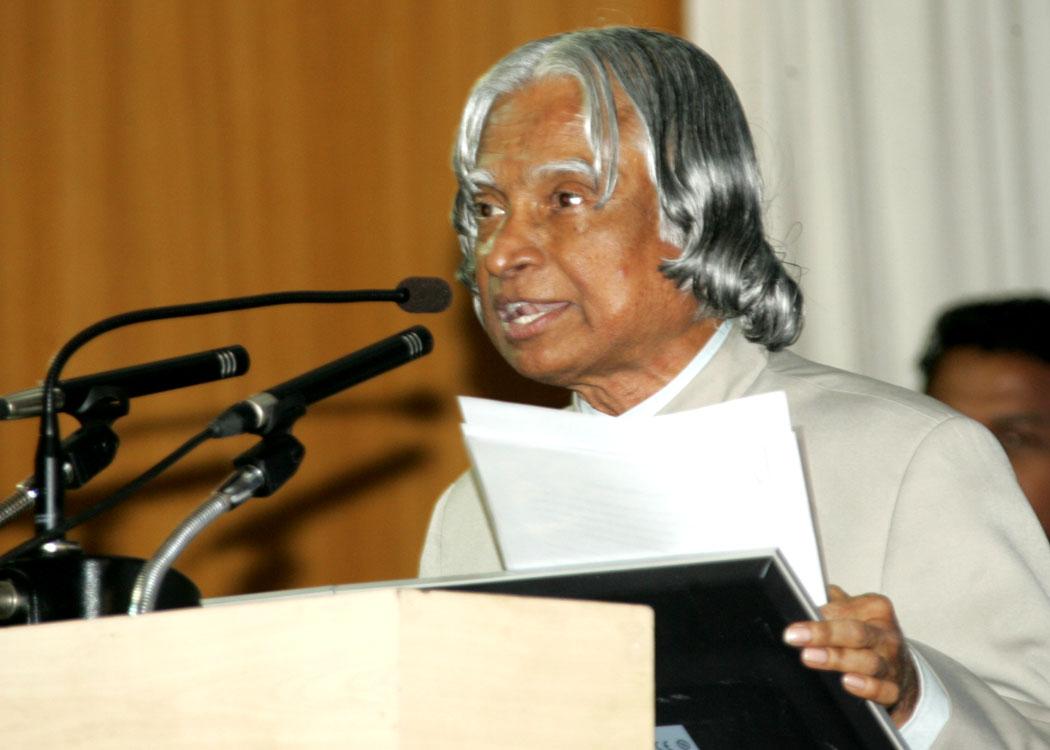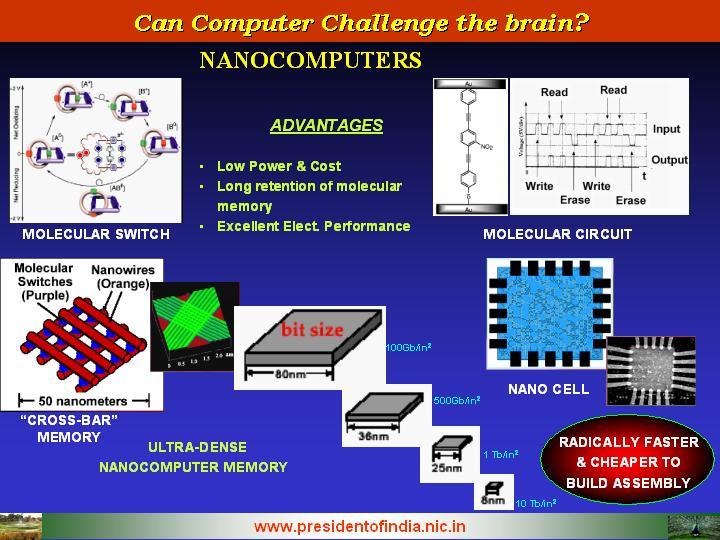Address At The International Conference On Computational & Experimental Engineering And Sciences, Chennai
Chennai : 01-12-2005
Science is Borderless
I am indeed delighted to participate in the International Conference on Computational and Experimental Engineering and Sciences. I greet the organizers, eminent scientists, technologists, educationists, researchers, education planners, distinguished guests and other participants. I particularly greet the international participants for sharing their experiences. I am happy to know that the Conference deals with the aerospace, mechanical engineering, computer sciences and applied mathematics. Rightly, the Conference has placed equal importance to the three of areas of research namely theory, modeling and experimentation in engineering and sciences. Since the conference is on the computational and experimental engineering and sciences, I would like to start with the potential of the computer power in the next three decades. Molecular switches and circuits along with nano cell will pave the way for the next generation computers. Ultra dense computer memory coupled with excellent electrical performance will result in low power, low cost, nano size and yet faster assemblies.
Can computer challenge the Brain?
I would like to share with you friends, some of the predictions of Ray Kurzweil written in his book "When Computers Exceed Human Intelligence - The Age Of Spiritual Machines". World Wide Web will make tremendous impact in the way we communicate and live. Most of the computers and accessories will be of micro sized, wearable and will have wireless communications with each other.
Moderately priced PCs capable of performing about a billion calculations per second today, will be able to perform about a trillion calculations per second within next 10 years. It is possible by 2020 computational ability of an ordinary PC could exceed the capability of human brain. By 2030 the capability of a normal PC would be around 1000 times of human capability. Definitely my view is: the creativity of the human mind will be always superior to even the most powerful computer in the horizon.
By the end of this century there would be a strong trend towards convergence of human thinking with the world of machine intelligence that the human species initially created. When there would no longer be any clear distinction between human and computers, how the molecular biologists would help us to retain the supremacy of man over the machines? Computers are going to give us a challenge. It is not only for the biologists, neurologists and psychologists; the entire scientific community would have greater responsibility of keeping the mankind above the man-made computers. Unfortunately, the creativity and imagination components of human brain have not been fully explored and utilized. Even the human genome research has enormous application of software in understanding the complex sequence of gene profile and its relationship to human health and disease. With a wide ethnic diversity of our nation, a unique database can be created with special application of pharmacogenetics (personalized medicine) for focusing healthcare delivery.
With the recent advancement in the computational capabilities and bioscience and also availability of large amount of clinical data, study of the brain particularly in the conditions of mentally challenged children has become possible.
Mentally Challenged Children Research
When I was associated with Anna University in Chennai some time back, apart from my teaching activities on various societal transformation missions, I was guiding Father A.K. George on a doctoral research project. The research was aimed to find integrated solution using software, hardware application to achieve a near normal functioning of the brain of mentally challenged children. When I saw some of the mentally challenged children performing certain activities like singing, painting in Central Institute of Mental Retardation, Thiruvananthapuram, I got convinced that one day convergence of information and communication technology, medical electronics, bio-technology and mathematical simulation can find a solution for their problem. We have been studying the mentally challenged children in various research institutions, homes for mentally retarded and hospitals. We are confident that it will be possible to transform the functions of the damaged portion of the brain say left hemisphere to the normal portion right hemisphere of the brain by some triggering mechanism, or by implanting a bio-chip to carry-out those functions. This is a complex problem which needs an integrated approach involving medical scientists and technologists for a targeted permanent solution which can help children afflicted with this mental disability.
A neurological disorder that affects the functioning of the brain that is Autism impacts the normal development of the brain in the areas of social interaction and communication skills. Children and adults with autism typically have difficulties in verbal and non-verbal communication, social interactions, and leisure or play activities. The treatment is not amenable exclusively through a scientific diagnosis. It has to be through physiological, psychological and neurological integrated care.
Optimal Utilization of Human Talent: The complex nature of brain functioning engulfs in itself answers to many problems that need to be fully understood for human development. The structural and functional mapping of human brain would help in scientific analysis of human behaviour. During my recent visit to Switzerland I saw the researchers in Brain and Mind Lab (EPFL), Lusanne working on such a mapping. Through rigorous and extensive research findings, if it becomes possible to analyze behavioral tendencies and derive an inclination or aptitude pattern of a person, especially at an early age, it will help the person to opt for that field or area, for optimum utilization of the human potential and talent. Now I would like to discuss my experience on the application of computers in the development of aerospace systems.
Light Combat Aircraft
Computer Aided Design and Engineering: In today?s world, Computer Aided Design and Engineering are the backbone of any new product development. Even product improvement needs number of Computer Aided tool set. In the last one and half decades, significant developments have taken place in the computer aided design and engineering tools that have revolutionized development and realization of products as complex as an aircraft.
In India, the Light Combat Aircraft Programme pioneered application and even development of Computer aided design and engineering tools. These tools and techniques have helped in realizing an optimum design and enabled manufacture and assembly of complex components both metallic and composites. Amongst a host of computer aided engineering tools that were developed as part of LCA project, the prominent one was ?Virtual Reality?. In this technology, 3-D models of all the components are developed using CAD tools, the models are assembled using VR tools. Using these VR tools, the assembly procedures are checked, assembly jigs and fixtures are defined. Also the step by step procedure for accessibility and maintainability are also tested and optimized.
Using VR tools, digital prototypes of LCA were made on workstations and powerful mainframe computers. Assembly and maintenance aspects were studied on these computer models. Using VR and computational fluid dynamic codes (CFD), flow visualization was done, kinematics of sub-systems such as landing gear were studied both in static and dynamic conditions simulating fluid flow and aerodynamic loads. Using gloves and visual devices, accessibility and maintenance aspects were studied and were demonstrated to the customer much before the aircraft was ready.
Autolay Software and Design
Another important contribution of LCA programme was development of computer aided design, analysis and manufacturing of advanced composite parts. The "AUTOLAY" software developed by ADA is the first software available, which can be applied commencing from conceptual design, detailed design analysis, manufacturing and quality control. This software has been used extensively by Airbus industries in the design of A-380 aircraft the largest passenger aircraft of the world. "AUTOLAY" has also been bought by Companies such as Boeing, Antonov Design Bureau, submarine and racing car industry. During the period 1987-2000, LCA programme transformed itself into an exporter of software for composite parts from a CAD software importer. The other software developed by LCA programme in collaboration with R & D laboratories and academic institutions are:
(1) Computational Fluid Dynamics (CFD): with these tools it is possible to analyze the flow not only Subsonic Mach numbers but also Supersonic Mach numbers.
(2) Computer Aided Manufacturing (CAM). 5 axis NC programming, sheet metal forming, composite parts lay up, computer aided process planning.
(3) Computational electro magnetics ? enabled estimation of radar cross section of full aircraft and a host of other problems such as electro magnetic interference, optimal location of antennas etc.
Product Data Management tool LCA project has also used in the later phase Product Data Management (PDM) tools which enabled further improvement of quality and reduction in assembly time. A new design tool that is now emerging is MDO (Multi Disciplinary Optimization). This enables taking the impact of multiple disciplines in the design of complex products and arriving at the optimum product design. Indian organizations must master this technology so that they could develop cost effective world class products.
Modeling and Simulation: In the development of a manned aircraft, a six degree of freedom simulator is established with high fidelity aircraft mathematical models and visuals. The experimental test pilots fly this simulator extensively and optimize their flying techniques. Optimizing the handling qualities that enabled agile but safe flying is one of the key functions of a simulator. A high fidelity simulator of LCA was developed at Aeronautical Development Establishment (ADE) and this was flown by the pilot who did the first flight of LCA very extensively. Wg. Cdr. Kautiyal was the pilot who flew LCA for the first time on 4th January 2001. After he landed, I asked him how he felt flying the LCA, first time. Wg. Cdr.Kautiyal said that he felt as if he was flying the
simulator. This shows that our design team along with pilots developed a simulator which reproduced the handling qualities of actual aircraft. This is a note worthy accomplishment of our development team.
Open system architecture: software driven need: In case of advanced aircraft, especially fighters, as much as 50% of the cost of the aircraft is avionics. The vehicle management system, flight control systems, weapon management systems are centered around avionics. The rate of development in electronics is so fast that obsolescence occurs very soon.
While a fighter aircraft is used for 25-30 years, electronics become obsolescent in 3 to 5 years. This results in costly modification to the present generation aircraft to update the electronics and the related software. In the aircraft that are being operated by Air Force all over the world, Military grade electronic components are used. These components are order of magnitude costlier and only a few manufacturers produce these components. To overcome the twin problems of high cost and high obsolescence, the LCA design team adopted a new philosophy. Instead of MIL grade components, they have designed equipment using commercial off the shelf components (COTS). They have also adopted open system architecture for its software. The result is our avionics system that could be updated with new generation electronics with minimal changes to software and other hardware. This philosophy keeps the aircraft up-to-date for decades without any fear of obsolescence and non-availability of components. The cost is also reduced substantially. I understand LCA is probably the second type of aircraft in the world to adopt this architecture. Now I would like to discuss the innovative use of computers in the development of reentry vehicle design.
AGNI: The re-entry System
Let me share with you the development of hyper sonic missile system called AGNI missile, a long range missile. When it re-enters in the atmosphere, it experiences a high enthalpy with almost burning temperature of 4000oK all around the heat shield and the nose cone. We had then designed a structure using a material based on Carbon-Carbon which can withstand this high temperature. The problem we faced was to simulate the external aerodynamic flow in the subsonic, supersonic and hypersonic speed regime. In India, we can externally simulate subsonic, sonic and supersonic flow. But in 1989, we did not have a hypersonic wind tunnel facility and also for
AGNI class of missiles, no developed world will allow their wind tunnel facility to be used. Hence, in that situation, we had to resolve the problem only through CFD (Computational Fluid Dynamics) solution. CFD was then a new field. In India, CFD groups were in formation stage at various institutions. Prof SR Deshpande was pioneering this area at IISc (Indian Institute of Science), Bangalore. He, and ten members of DRDL (Defence Research Development Laboratory), Hyderabad, formed a CFD team. When CFD problem was formulated initially, the computational time in an IBM computer needed 240 hours. At that time, we neither had so many computers in India nor the adequate time. Prof Deshpande and the DRDL team evolved what is called ?kinetic energy split methodology?. The problem which needed from very high computer time was solved with 1/10th of the computer time using elegant methods by suitably segmenting the problem. Also, it triggered the necessity of design and development of super computers in the country. This led to the birth of super computers. Today, India has PACE+128, a parallel computing facility with one Terra Flop capacity for advanced CFD solutions. International cooperation is progressing for the evolution of Grid Computing which has got a tremendous potential in connecting multiple locations and utilizing the computing power from different institutions. Now let me discuss the development of reentry vehicle design.
Development of Reentry Vehicle Design: One of the critical technologies in the development of long-range strategic missile systems is the Re-entry Technology. During the reentry in the sensible atmosphere the frictional heating leads to tremendous heat loads on the re-entry vehicle, which will have to be managed intelligently. Typically
for long-range systems, one encounters an enthalpy level of upto 20 Mega Joule per KG for speeds up to 6 km/sec entry speed. The challenge here was to design, test and qualify reentry vehicle structure and thermal protection system to ensure safety of payload. The design/analysis gets complicated due to aerothermodynamics of the hypersonic flow with multiphase air due to dissociation and ionization. In particular, the thermal protection system is required to withstand the expected heating rates & pressure. During the development of this critical technology one of the challenges was to devise methodology to achieve this requirement in the absence of a hypersonic wind tunnel facility.
In order to validate the design with existing facility for the reentry vehicle development, a novel approach has been used. This approach involves mathematical modeling of governing physical mechanisms with just right details and simplified approach to be able to handle within the available computational power as we discussed. This coupled with a set of second level experimentation within available resources have yielded good confidence for flight test. With this approach the design has been highly successful and has been flight-tested many times. This is one example of how a high end critical design/ qualification requirements can be carried out using computational methods.
Conclusion: Science is borderless
Let me share with you certain problems that need integrated solution to enrich the life of the people of our planet. Particularly, the international scientific gathering may like to consider the following areas of research:
1. In the energy sector, increasing the solar photovoltaic cell efficiency from the existing 12 to 14% to 45 to 50% using the technologies such as nano material (CNT ? Carbon Nano Tube) and nano electronics based on the computer simulation for the optimization of the parameters and performance is an important mission.
2. Proteomics is the study of all the proteins expressed by the genome of a cell. It is the logical extension of genomics. Proteomics helps to understand the basic biological processes critical to normal cellular functions as well as the development of diseases. It identifies the essential components of these processes and exploits these components as targets in the development of new methods to prevent or treat diseases. The proteomics programme is done nationally. The type of work involved is huge and challenging, and much bigger than the Human genome programme. Sharing of missions by International Scientific community is vital.
3. In many places in our planet, we experience severe earthquakes resulting in loss of life, loss of wealth and in some cases it destroys the decades of progress made by the country and its valuable civilizational heritage. India has earthquake problems periodically in certain regions. Recently, in our state of Jammu and Kashmir and the neighbouring country, there was an earth quake. US, Japan, Turkey, Iran and many other countries also suffer due to earthquakes. It is essential to forecast the earthquake using multiple parameters using precursors such as pre-shock conditions, electromagnetic phenomena prior to final rupture and Atmospheric/ ionospheric anomalies
4. Monsoon prediction worldwide is known. But accurate and timely prediction of onset of monsoon is a global research priority. Recent heavy rains in Mumbai, Chennai and Hyderabad and Katrina hurricane in US created enormous loss of life and property. This brings out the necessity for global monsoon research.
Solutions to these four problems: first relating to energy, second relating to healthcare, third relating to earthquake forecasting, and fourth precision forecasting of monsoon are vital for the growth of the society. The magnitude of the problem is such that it needs the pooling of best of researchers in multiple fields and also requires very intensive computing environment. In short the world should become a virtual laboratory with virtual computing environment leading to the Knowledge Grid across the world to solve the complex scientific challenges for enriching the humanity.
Hence, I request the scientific and research community and other participants from the academia and industry assembled here to embark on a goal oriented research and development. Encourage the youth to take up the challenge in these missions with international collaborations. I wish the international conference on Computational and Experimental Engineering and Sciences (ICCES-05) success in your deliberations and missions.
May God bless you.

